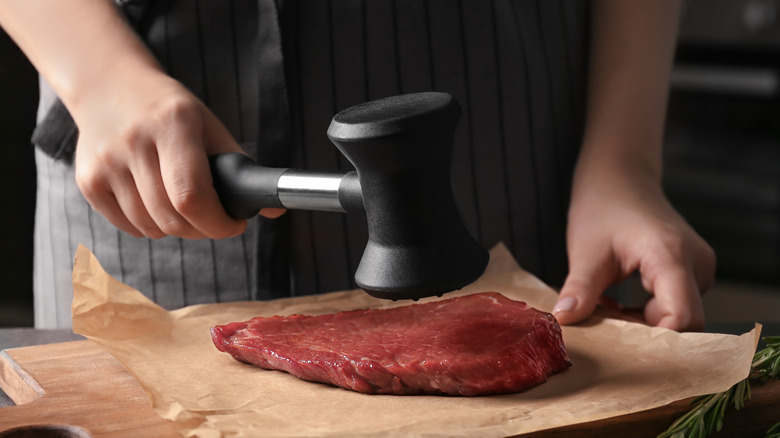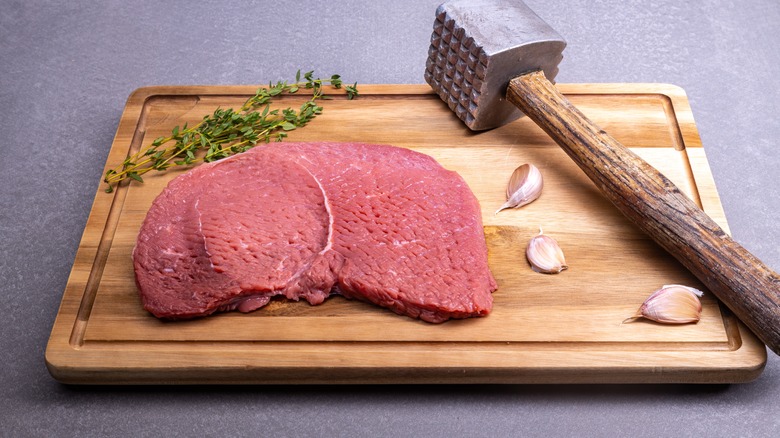The Best Cuts Of Meat To Tenderize With A Mallet
The best cuts of meat to tenderize are the tough ones, which also tend to be the less expensive pieces. These come from muscles of the cow that are used the most, such as the shoulders and legs, so they're leaner and stronger. Such cuts include flank, skirt, sirloin, and tri-tip. Not only will the mallet break down the muscle fibers and make the meat more supple and easier to chew, it will reduce the cooking time. Thinner meat will cook faster; it also retains more juiciness because it spends less time in the heat. The more time meat spends cooking, the more the muscle fibers shrink and the tougher it gets. The mallet can also help you achieve uniform thickness in a piece of meat for more even cooking.
When tenderizing tough and uneven meats, make sure you keep an eye out for bones or opt for boneless cuts — pounding on a bone with a metal hammer would certainly not be a recommended culinary technique. On the other end of the spectrum, the cuts you don't want to tenderize are the ones that are inherently tender; these are the most premium cuts such as filet mignon or ribeye. But for those pieces of meat that need a little tender love and care, using a mallet is worth the extra time and effort.
How to tenderize with a mallet
There's a certain finesse required when tenderizing meat with a mallet. Yes, you want the end result to melt in your mouth or be as thin as possible, but there can always be too much of a good thing. Over-tenderizing or pounding too hard can lead to a mushy mouthful, so keep the pressure at about medium.
First things first, wrap the piece of meat in plastic wrap, parchment, or wax paper — some form of barrier between the mallet and the meat will prevent excess damage to the meat. The wrapping will also collect any juices and keep the mallet and cutting board clean. The spiky side of the mallet is used to do the heavy lifting of breaking down the connective tissues. The flat side, used to spread out the meat, is more for chicken breasts, veal, or a faster-cooking flank steak. You can use both sides of the mallet head, but the spikes are what do the tenderizing and lead to that melt-in-your-mouth texture.
If you don't have a meat mallet, worry not. A heavy-bottomed pan, rolling pin, or even a wine glass or sparkling water bottle will suffice to do the pounding.

